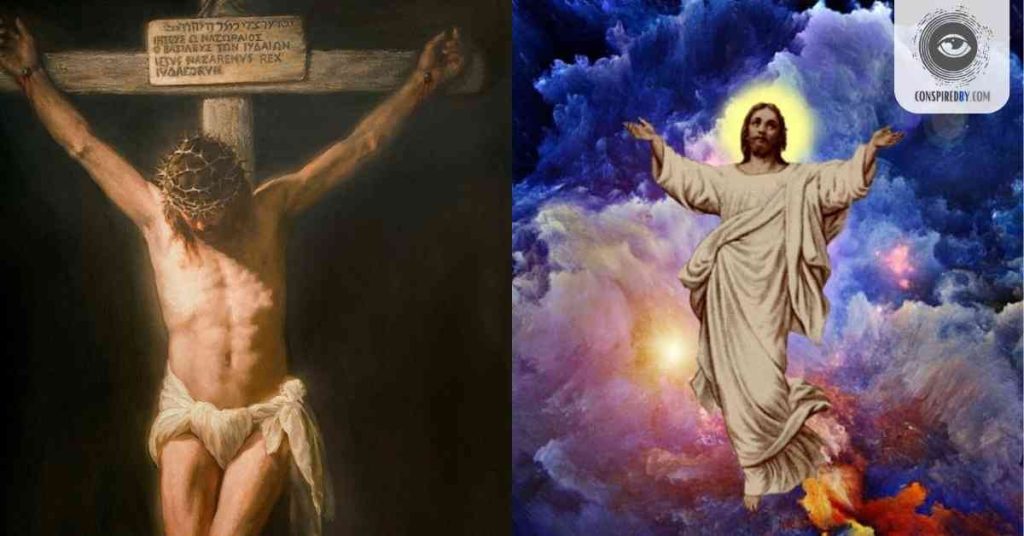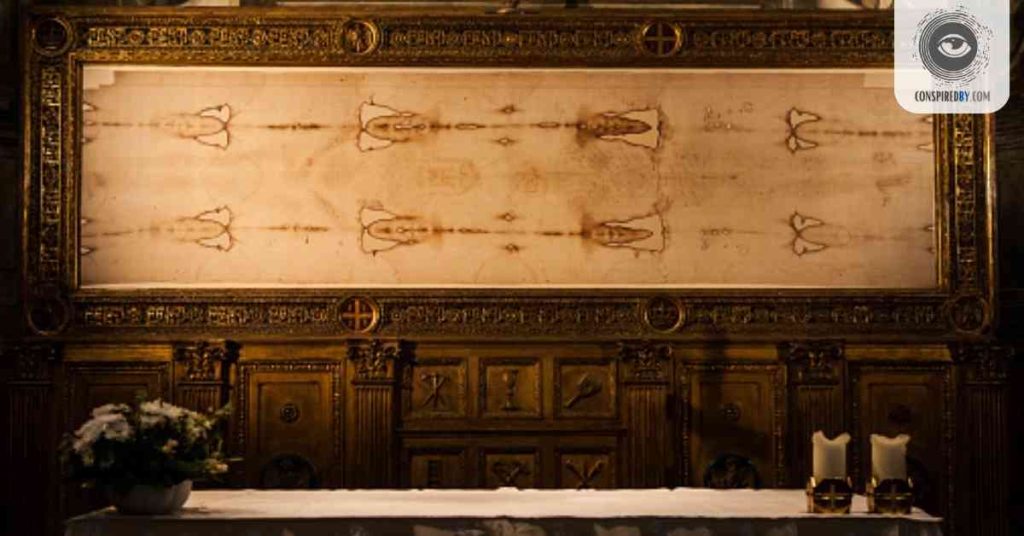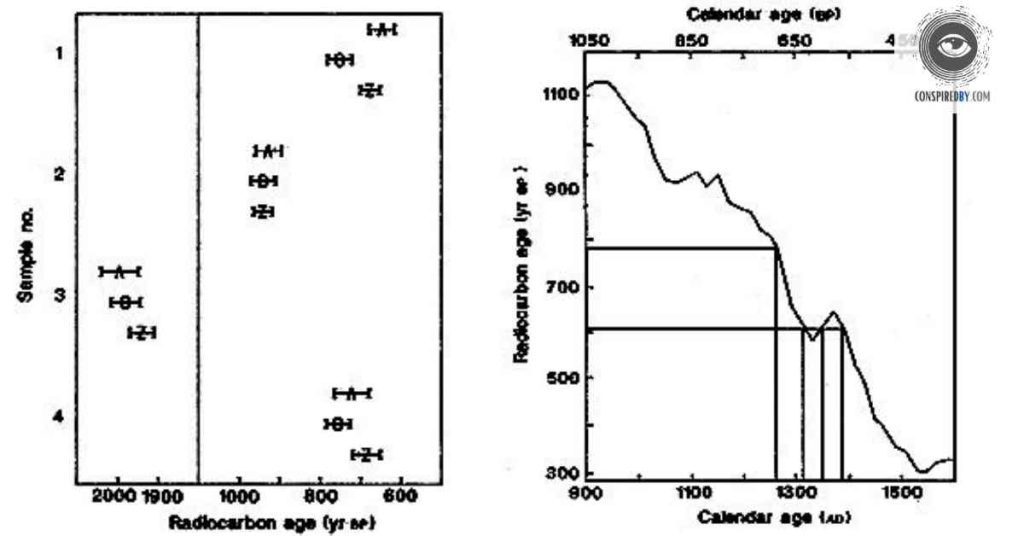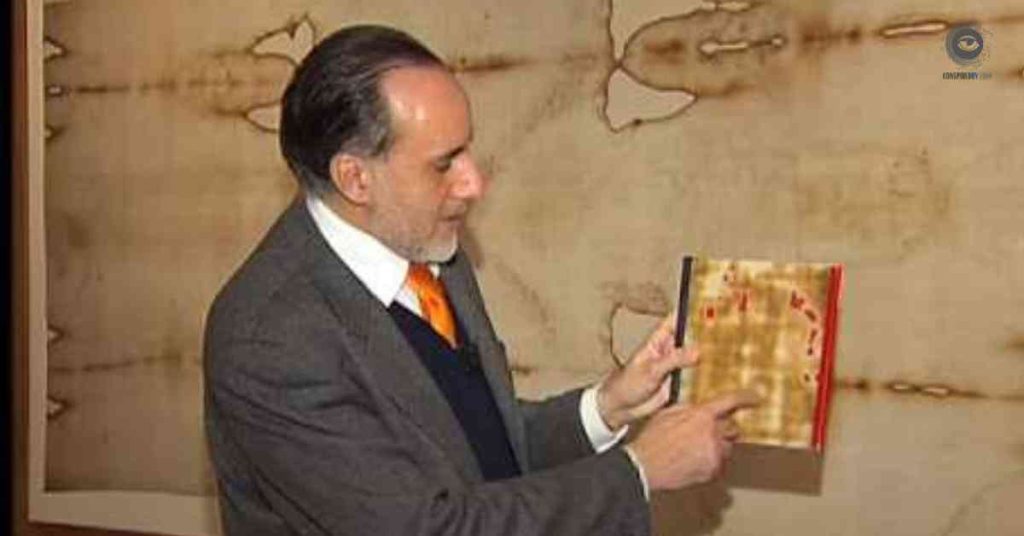“The Shroud,” a sacred religious artifact believed to show Jesus Christ’s face. It is a long-held belief that this is the exact piece of cloth that covered the body of Christ after his death. The appearance of Shroud, which is now placed in the Turin Cathedral in Italy, was surrounded by the faith of religious followers and the doubts of skeptics.
Science intervened in uncovering the truth about the Shroud’s origin and the faint image of the Christ it holds. Over the years, numerous scientific experiments have been conducted, from Carbon dating to light-reflecting tests on its microscopic fibers. Could this be the real burial cloth of Christ? Or Could it be a clever medieval forgery? Let’s find out from its fascinating history to its latest scientific discoveries.
In writing this article, information was gathered from sources like Shroud.com, History.com, and Hazardsandcatastrophes.com. Are you curious about learning more? Let’s dive into the intriguing mysteries and scientific revelations of the Shroud.
Christ’s Crucifixion and Resurrection

The son of God and the most-known religious leader, Jesus Christ, was crucified and condemned to death in 33 A.D. Accused of blasphemy, Jesus endured a painful death by the Romans.
After Christ’s death, his wounded body was wrapped in a clean linen cloth and placed in his tomb. Astonishingly, three days after his death, some of the disciples found the tomb empty and believed that Christ had resurrected and ushered to the ‘Kingdom of God.’
History of the Shroud

The story of Christ’s burial cloth is mentioned in the gospels with terms like cloth, piece of fabric, shawl, or bandage. However, the Shroud in Turin first appeared in the 1350s and was exhibited in the city of “Lirey.” The sudden emergence of it sparked doubts in many as it was not found until the middle ages.
“It appears as if from nowhere,” said the Medieval Historian, Dr. Dominic Selwood.

Bishop Peter, a man of God, wrote a letter to Pope Clement in 1389. The letter claimed that the Shroud was forged by a painter. Although the Bishop’s intentions were unclear, it was evident that the Church, too, was doubting its authenticity.
In 1898, Secondo Pia, an Italian Lawyer and photographer, was given the opportunity to capture the relic. His capture took the world by surprise as a figure of Christ appeared between the light and dark shadows.
Encounter with the first scientific experiment.

The artifact created both fascinating and controversial arguments all over the world. This was when the Shroud had its first encounter with a scientific experiment. In 1978, the ‘Shroud of Turin Research Project,’ known as the STURP, studied the Shroud from a scientific perspective. The team of scientists led by Dr. John Jackson carefully studied the relic for five days.
In 1981, STURP released a statement proving the stains found on the Shroud were indeed human blood. However, the fact that this was Christ’s burial cloth was still not convincing, as a forger could have splattered the blood. The idea was soon dismissed as the blood distribution seemingly matched the patterns of wounds Christ held.
Moreover, unlike paints or other pigments, the stains have not gone through the fibers. The imprint of the body image was only found on the surface of the cloth. Each thread contained around 300 fibers, and only the fibers on the surface carried the stain, while others did not. It is almost impossible for a forger to paint, focusing on the microscopic fibers.
“I do think that we are dealing with the actual burial cloth of Jesus,” said Dr. John Jackson of the Turin Shroud Centre of Colorado.
Authenticity challenged

In 1988, with doubts still surrounding the Shroud, scientists suggested a Carbon Dating test to settle the matter once and for all. The Church was hesitant to disturb the state of the Shroud. However, the Church agreed, and scientists wasted no time to start with their work.
As the world was anxious, the results of the Carbon dating tests were released. The results declared that the relic dates back to the 13th or 14th Century. The test results showed with 95% accuracy that it was forged in medieval times.
The conversation of the Shroud being real or fake was restated for a while. But it didn’t take that long for the Shroud to set its next groundbreaking revelation.
Rediscovering the truth

Professor Giulio Fanti of the University of Padua has carried a fascination with the Shroud since he was a child and made it his lifelong mission to find out Shroud’s truth. “I felt a sense of Infinity,” said Prof. Fanti describing the Shroud. Not convinced by the Carbon dating results, he came forth to prove them wrong. Prof.Fanti believed that there might be a loophole in the testing somewhere.
Many samples taken were burned, and only the photographs of the samples remained. Photographs of the samples released contained signs of deep stains, heat damage, and contaminations.
Diving more into the historical archives, Prof. Fanti found Hungarian illustrations which dated back to the 12th Century. In the illustrations, Jesus’s body was lying on a piece of cloth that had similar weaving patterns as the Shroud and four circular marks that matched the marks on the Shroud.
Restoration of faith

Since Prof. Fanti wanted solid proof, he requested STURP members to send the samples they had in their possession. Prof. Fanti continued his experiments with a sample fiber of the Shroud sent by Raymond Rogers, a member of the STURP. The fiber underwent two major scientific experiments that gave exciting revelations about the Shroud’s origin.
The first test was a ‘load-bearing’ test which detects the strength of a fiber leading to determining how old a fiber is. Since the technology available so far can only run the test on a thread, Fanti builds his machine, which can test even a microscopic fiber. The results left everyone stunned and proved the carbon dating test results wrong. The fiber seemed to date back even further, around 400 A.D., at a 95% confidence level.
He continued his mission to prove that the material was from before Christ, and his next step was to perform a ‘Light Reflecting Test.’ He used an Infrared (I.R.) Spectrometer and a laser that could detect how well the light reflected through the fiber to conduct the test. According to the test, a material’s ability to reflect light decreases as it gets older. His results left everyone speechless as he dated the material back to 200-300 B.C.
The average of all Prof. Fanti’s tests gave the final date as 33 B.C., proving that the material did belong to the time before Jesus.
What is yet to uncover

Image imprinted on the surface was still doubtful to all. Prof. Fanti tried to explain the phenomenon with the effects of electricity. He believed that electrical or Corona discharges from a plasma ball have the potential to create such imagery.
Prof. Fanti discovered that bombarding a piece of cloth with high electricity for over 24 hours generates an image of that sort. However, the occurrence of an electrical charge of that magnitude on Christ’s body remained unanswered. The only explanation he could think of was divine intervention.
Further, Prof. Fanti mentioned that there could be a life after this life, which could be evidence of a resurrection. Dr. John Jackson and Prof. Fanti both assume that if this is the burial cloth of Jesus, it is the resurrection cloth too.
Conclusion
The Shroud, one of Christianity’s most sacred items in Turin’s heart, created fascination among faithful religious followers and was controversial to the skeptics. Shroud’s sudden appearance in the 1350s made many people question its authenticity. Long-held beliefs and results of scientific experiences conflicted to find their truth. Scientific experiments gave many revelations over the years for this burial garment of Christ.
Also read,


